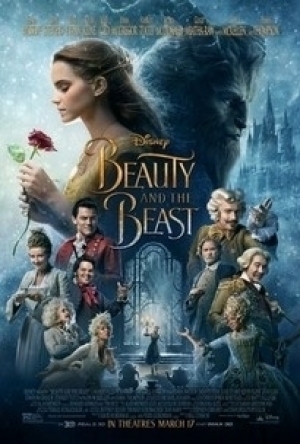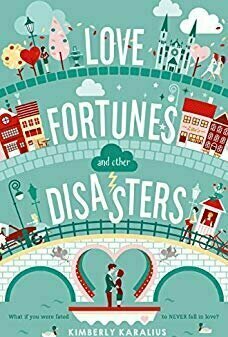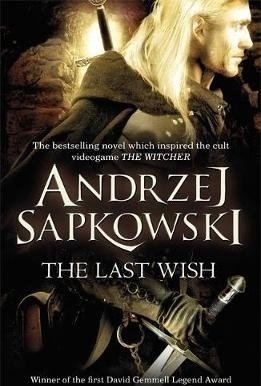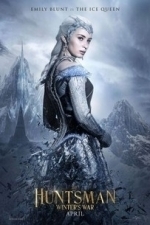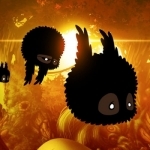
English Audio Books - Librivox
Book and Education
App
English Audiobooks - Librivox Learn English by reading and listening to "Audiobooks". If you know...
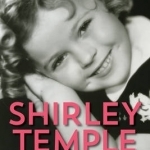
Shirley Temple: American Princess
Book
At the age of five, Shirley Temple became the world's most famous and acclaimed child-the most...
Gareth von Kallenbach (980 KP) rated Beauty and the Beast (2017) in Movies
Jul 12, 2019
Friends would look at me askance and ask, “The Beast? Really?”
And I’d simply reply, “Have you not seen his library?”
I also claim Belle as my favorite Disney princess. As a bookworm, Beauty and the Beast gave me a princess I could relate to. Sure, I had just graduated from high school the year before the animated film – not really the demographic Disney was catering to. But when I first watched Belle’s introductory scene, as she made her way through the village with her nose buried in a book while the townfolk sang of her “odd” behavior, I felt l the corners of my lips rise on their own, in a smile of recognition.
Sure, it also may have been because of the clever lyrics of the late Howard Ashman and the wondrous melodies of Alan Menken in that first song alone, but Belle quickly me over not only with her joy for stories and spirit of adventure, but also with her brave spirit.
Beauty and the Beast is a fairy tale told many times over and Disney’s live-action version follows the animated classic closely with some variation and additional scenes and few more songs. Like the animated film, it’s sweepingly romantic and just as enchanting. What the audience may struggle with is that Emma Watson’s Belle is not as…well, animated as the animated Belle. She brings a solemnity to the role, and as singing talent goes, while she is no Paige O’Hara, she can sing.
Luke Evans makes a menacingly handsome Gaston and his big number, with his sidekick LeFou (Josh Gad) is an entertaining high point that cements Gaston’s position as my favorite villain. Dan Stevens brought a bit more humanity to Beast, and with a heartbreaking song of his own, his despair is more keenly felt in this movie. But I have to admit, I prefer Josh Groban’s version of Beast’s solo, which you do get to hear if you sit through the credits.
Lumière the candelabra and Cogsworth the clock were brought to life with great voice work Ewan McGregor and Ian McKellen, respectively. Emma Thompson voiced Mrs. Potts perfectly. I don’t know if it was her voice, the theme song or the ballroom dance scene that provoked an overwhelming sense of nostalgia, but the captivating combination literally brought tears to my eyes. Kevin Kline, who played Belle’s father, Maurice, Stanley Tucci, and Broadway great Audra McDonald round out a solid supporting cast.
As a huge fan of the 1991 Beauty and the Beast, I didn’t believe a live-action version could improve on the beloved, timeless classic. But just like with the animated film, it was truly the songs that made the movie, and the music does it again for the live-action film, making it a memorable, magical treat for young and old alike.
Kara Skinner (332 KP) rated Love Fortunes and Other Disasters (Grimbaud, #1) in Books
Sep 10, 2019
For Fallon Dupree, a spinster fortune is just another reason that she’s an outcast in Grimbaud High School. With her parents and brother all strict inspectors in the clothing and restaurant department, Fallon leads a high quality life that quickly gets her branded as a snob. Not ready to give up on love quite yet, Fallon joins a rebellion to overthrow Zita’s charm shop and take back their own fortunes. Much to her surprise, so does her next door neighbor, Sebastion, who is also the high school’s heartbreaker.
Okay, if you’re following me on Twitter, then you already know I like this book. It’s adorable and sweet. I am a bit of a sucker for modern fairy tale towns like Grimbaud is. Fallon is a really good character, even though I don’t really like her parents. I mean really, controlling much? Her brother is pretty cool, though.
I actually like Sebastion’s character. Player love interests can either be complete jerks or be really hot, and Sebastion is definitely hot. Unlike the love interest in The Boy Next Door, the teen romance I’m reading now, Sebastion isn’t a complete douche to girls, even though he does date around. He is really funny and I like the chemistry between him and Fallon a lot.
What I didn’t like about this book was how a lot of them just gave up. I mean, if I was in the Spinster Villa, I would be over at the Bachelor Villa all the time. Even if it wasn’t true love, it would be nice to have a fling, right? They are all lonely. I can’t see the villas staying segregated because of a piece of ticker tape they got a few decades ago, even if the fortunes always come true. Worst case scenario there’s always friendship, right? And some of those love fortunes definitely didn’t have a life sentence. You will get a terrible rejection in the near future? That could have been my fortune in the sixth grade. Now I’m dating an incredibly sweet guy who loves me and is adorable and sexy. Too much of this town gave up way too quickly. At least Ms. Ward tried.
I still give this book four out of five stars. Romantics out there will definitely enjoy it, and every teenaged girl feeling unlucky in love should read it.
Ivana A. | Diary of Difference (1171 KP) rated The Last Wish in Books
Aug 3, 2020
<a href="https://diaryofdifference.com/">Blog</a>; | <a href="https://www.facebook.com/diaryofdifference/">Facebook</a>; | <a href="https://twitter.com/DiaryDifference">Twitter</a>; | <a href="https://www.instagram.com/diaryofdifference/">Instagram</a>; | <a href="https://www.pinterest.co.uk/diaryofdifference/pins/">Pinterest</a>;
#0.5 <a href="https://www.goodreads.com/review/show/3150137897">The Last Wish</a> - ★★★★
<img src="https://diaryofdifference.com/wp-content/uploads/2020/06/Book-Review-Banner-59.png"/>;
For me, The Last Wish is the perfect introduction to start the Witcher series and meet Geralt of Rivia.
<b>Synopsis</b>
The Last Wish is the prequel to the Witcher series. In this book we are introduced to Geralt of Rivia, a Witcher - a man whose magic powers and strength training made him a brilliant fighter and a merciless assassin.
However, Geralt is not an ordinary killer. He hunts the monsters that bring fear to people and creatures that attack the innocent.
But not everything is as seems, as some monsters are not evil, and not everything fair is good. In every fairy tale, there is a pinch of truth.
<b>My Thoughts:</b>
I loved the introduction of Geralt in this book. I have known Geralt from the video games, and then I watched the TV Show. Usually I am more attracted to the book characters rather than a movies/TV Show character, and this was no different. Even though, I have to admit that the video games and the TV Show are also extraordinary, when it comes to their characters. Geralt in this book is vivid and brave, and I was happy to follow him on the various adventures he went on.
The book is written in multiple chapters, each containing a call for a quest, and the following chapter containing the quest itself. Each quest is a completely different topic, all featuring Geralt, and many side characters joining him as we move along in the story.
Each chapter was magical on its own, and we get to meet various stories. We meet a girl that turned to a striga because of a curse. We encounter a beast hidden in a castle, a story that resembles the Beauty and the Beast. There are also stories that resemble the Snow White and Cinderella, all significantly darker and much more graphic in their retellings. I love how the author took those storylines and managed to create something much more sinister and cruel. Some of the stories also reminded me of the traditional Slavic folk tales, which brought back some nice feelings from my childhood too.
The last few chapters were the ones I enjoyed the most. Especially the moment when we get to meet Yennefer for the very first time. I cannot wait to read more about her in the books.
A truly beautiful and adventurous fantasy novel by Andrzej Sapkowski and published by Gollancz. I definitely recommend The Last Wish.
Movie Metropolis (309 KP) rated The Huntsman: Winter's War (2016) in Movies
Jun 11, 2019
It’s fair to say then that it never really deserved any kind of follow up, despite a charismatic performance from the wonderful Charlize Theron. Nevertheless, Universal Studios approved another film soon after its release. But is The Huntsman: Winter’s War better than what came before it?
Taking place before and directly alongside the events of its predecessor, Winter’s War follows Emily Blunt’s Ice Queen, Freya, as she struggles to come to terms with the death of her baby. She becomes so consumed by rage and guilt that she banishes herself to an ice castle, much like Elsa from Frozen, training an army of kidnapped children to pass her time.
Chris Hemsworth and Jessica Chastain star as two of these warriors, taken from their families at a young age and taught how to fight and how to block out any feelings of love – as per the Queen’s orders. Naturally, this becomes increasingly difficult and provides the film with its romantic subplot.
Unfortunately, the usually excellent Hemsworth and former Oscar-winner Chastain have next-to-no chemistry and their truly dreadful Celtic accents stop the film dead in its tracks. It’s a shame that Winter’s War relies so heavily on these two when Emily Blunt and a sorely underused Charlize Theron are much, much better.
So much better in fact that the screen comes alive whenever they are on screen, whether that is together or flying solo. Blunt suffers slightly due to the nature of her role, after all, she is known to be a bubbly and happy-go-lucky person, but her Ice Queen is mesmerising and heart-breaking to watch nonetheless.
Theron steals the show yet again, despite her lack of screen time and as she did in its predecessor, lifts Winter’s War well above its average plot and dialogue. Elsewhere, British favourite Sheridan Smith is a pleasant comedic break as a foul-mouthed dwarf.
The cinematography is on the whole very good, with pleasant landscapes, reminiscent of Harry Potter dotted alongside CGI castles, polar bears and goblins. The use of practical effects by first-time director Cedric Nicolas-Troyan is also a pleasure to see in this day and age.
Alas, the plot and dialogue of Winter’s War leaves much to be desired and the lack of screen time for Blunt and Theron hampers what could have been an interesting and unique backstory for this particular duo of films.
Overall, The Huntsman: Winter’s War is an average film hampered further by its two leading stars. Fortunately, the inclusion of Blunt and Theron manages to lift it slightly above the standard of its predecessor, but not by enough for it to warrant another follow up. However, the signposts throughout the 115 minute running time confess a sequel is more than likely.
https://moviemetropolis.net/2016/04/07/hemsworth-and-chastain-disappoint-the-huntsman-review/
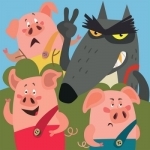
The Adventures of the Three Little Pigs
Book and Entertainment
App
The interactive story for kids about the Three Little Pigs and the Big Bad Wolf. No adverts, no...
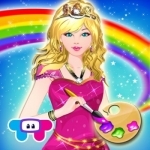
Little Princess Coloring Book!
Education and Games
App
~~> An enchanting, sparkling and interactive experience fit for Royalty ~~> 150+ beautiful...
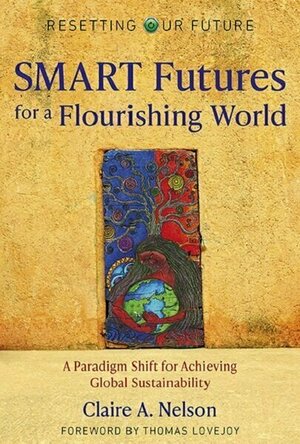
SMART Futures for a Flourishing World
Book
We know we have to change but the question is how. Many of us feel powerless to solve the looming...
